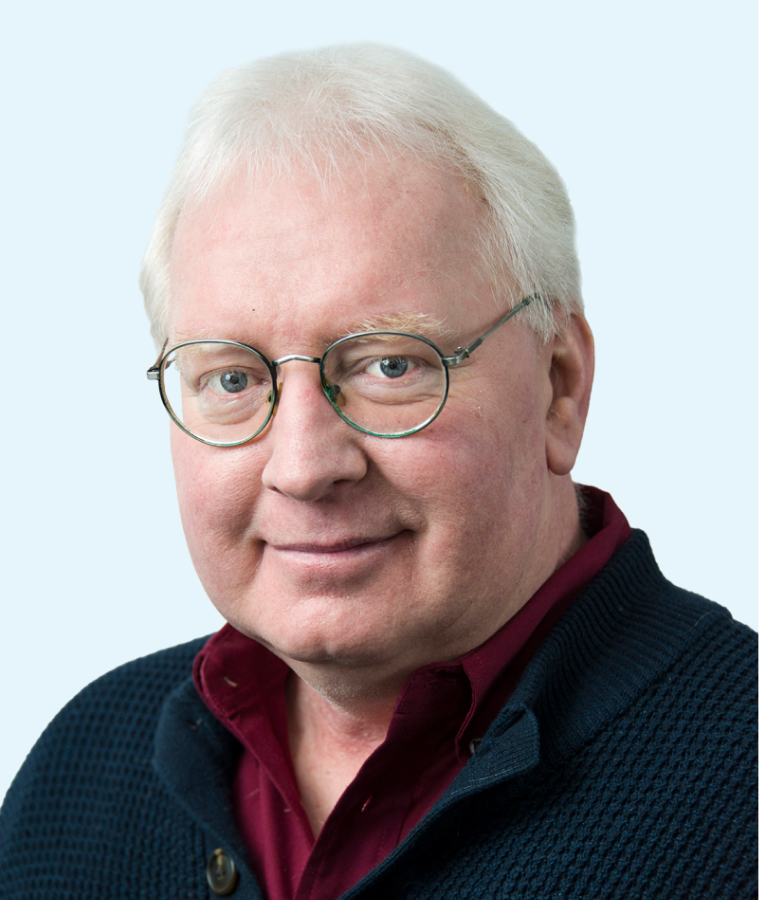A team of experts oversees efforts to build people, places, and projects.
To fully understand the value that Team Michigan provides, you have to consider the success of the businesses aided by its support.
The Michigan Economic Development Corporation (MEDC) is harnessing the talents of various industry experts to deliver solutions through the Make It in Michigan economic development framework; through this strategy, Team Michigan is leading efforts that facilitate the development, attraction and retention of top talent, build attractive places and communities that offer a high quality of life, and win more competitive projects that add to the state’s already solid base of high-quality jobs and industry.
A case in point is Airspace Experience Technologies (ASX). The company that made one of the world’s most innovative eVTOL aircraft got its start in Detroit in 2017 with the help of the MEDC, and today that firm flies high with the resources it has found in Michigan.
“Michigan is the original Silicon Valley,” says Jon Rimanelli, co-founder and CEO of ASX, which evolved out of Detroit Aircraft Corporation.
Rimanelli and his company are a testament to Michigan’s ability to nurture ventures from the startup phase to sustainable success. As the global leader in mobility and home to the nation’s top concentration of engineers, Michigan caters to the needs of innovative companies that are building the interconnected world of the future.
To better understand how Michigan built this unique and globally competitive ecosystem for business, it pays to dig deeper into the MEDC efforts that focus on supporting People, Places, and Projects. Team Michigan’s Make It in Michigan strategy makes all of this happen.
First, you should know that when a business leader like Rimanelli calls Michigan “the original Silicon Valley,” there is considerable substance to that claim. Long before anyone even used the term Silicon Valley, Michigan was creating business ecosystems that changed the world, from the automotive assembly line to the Arsenal of Democracy.
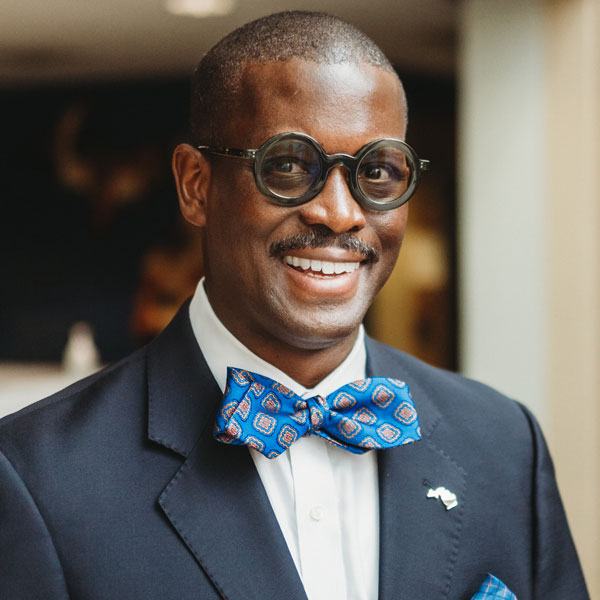
Quentin L. Messer, Jr.
Michigan was creating patented technology and manufacturing it into globally used products long before anyone attempted to create anything similar on America’s West Coast. As MEDC President and CEO Quentin L. Messer, Jr. says, “From our strengths in technology and innovation to a business-friendly environment and the Pure Michigan quality of life, Michigan has what it takes to build a championship economy.”
The MEDC recognizes that companies have choices about where to locate and do business. Rimanelli chose to build his aerospace company in Detroit specifically because it offers the talent, innovation ecosystem, and quality of place his company needs to thrive and be globally competitive.
ASX operates out of Detroit’s Coleman A. Young International Airport. “We are engaged in a public-private partnership with the City of Detroit, and the airport offers the perfect environment to design, build, test, and maintain ASX craft,” Rimanelli says of his venture that promises to radically alter the world of large-payload air cargo.
Michigan’s business-friendly ecosystem makes all of this possible. Michigan ranks as the No. 1 state for automotive investment and No. 4 in the nation in manufacturing output as a percentage of GDP. Michigan was named a top 10 state for doing business by Area Development Magazine and a top 10 state for competitiveness in the Site Selection Prosperity Cup index.
Michigan also ranks as the No. 3 state in the nation for energy sector job growth and No. 6 for clean energy jobs.
Messer says Michigan has everything business builders need to succeed. To make sure that Michigan retains that competitive edge, Gov. Gretchen Whitmer announced the Make It in Michigan economic development strategy in 2023.
“That strategy is based on three foundations,” Messer notes. “First, no state or province does hard tech as well as Michigan. We created it, we built it, we mastered it. Second, we believe that when you have large-scale manufacturing and great R&D, you provide an environment that produces an entire supply chain of customers and vendors, enabling small and medium-sized businesses to grow. Third, we understand that we have to be the most attractive place for personal and corporate investment. Companies need to feel safe and comfortable. In Michigan, we have built that environment. We have the talent you need to be successful. We provide bipartisan support for economic development. And we focus not only on business attraction, but also on business retention and expansion. Our entire strategy is anchored in People, Places, and Projects.”
Messer says the Make It in Michigan strategy fosters success because it focuses on building and enhancing the ecosystem for hard tech. “We are seeing growth in the mobility sector, aerospace and defense manufacturing, agri-business and life sciences, and the semiconductor manufacturing supply chain,” he says. “Silicon Heartland is growing with the expansions of Hemlock Semiconductor, Corning Inc., SK Siltron CSS, and others. We invest in talent in this sector. We build out the knowledge base at the technician level. We prepare young people at the K-12 level to become lifelong learners who will be technically proficient in enabling technologies.”
By focusing on advanced, high-growth sectors, Michigan is betting that these industries will drive future economic growth and pay Michigan workers the best dividends.
Toward that end, the MEDC has assembled a team of experts to support the state’s business attraction, retention, and expansion efforts through the areas of innovation, population initiatives, placemaking, and in industries including mobility and defense and aerospace. That team, which serves under the leadership of CEO Messer, includes:
- Chief Growth Officer Hilary Doe
- Chief Innovation Ecosystem Officer Ben Marchionna
- SVP of Community Planning and Development Readiness Michele Wildman
- Office of Defense and Aerospace Innovation Executive Director Col. John Gutierrez, U.S. Marine Corps (Ret.)
- Chief Mobility Officer Justine Johnson
AS THE STATE’S CHIEF GROWTH OFFICER, HILARY DOE FOCUSES ON BUILDING THE PIPELINE OF SKILLED TALENT NEEDED TO FILL THE ESSENTIAL JOBS AT MICHIGAN ENTERPRISES.

Hilary Doe
‘YOU CAN IN MICHIGAN’ IS THE MEDC’S AWARD-WINNING TALENT MARKETING CAMPAIGN. CAN YOU DESCRIBE THE CAMPAIGN, ITS GOALS, AND HOW YOU’VE IMPLEMENTED THE CAMPAIGN SO FAR?
DOE: ‘You Can in Michigan’ is a national marketing campaign that launched in October 2023. Its mission is to fill jobs in critical sectors by boosting the state’s population, supporting economic growth, and retaining and attracting top talent to Michigan. ‘You Can in Michigan’ is part of our broader work across the state to grow Michigan — taken together, Michigan’s is the most ambitious state talent retention and attraction effort in the country.
Based on feedback from talent, regional partners, and employers, the campaign was designed to center Michigan’s diverse career opportunities, as well as our unmatched “5-9,” highlighting great places to live, work, and play in communities across Michigan, from Detroit and Grand Rapids to Traverse City and Houghton. Michigan is home to one of the fastest-growing startup ecosystems in the country, a leader in critical industries like clean energy and green technology, and home to over 3,000 miles of lakeshore along nearly 21% of the world’s fresh water. We’re showing talent across our state and the country that Michigan is an innovative, creative place with awe-inspiring beauty and an affordable quality of life that makes it possible to live your dreams. You can have it all here — a rewarding career, a welcoming community, and a fulfilling life.
The campaign includes TV and radio spots, print placements, social channels, and an interactive website where talent can take a quiz to find their perfect Michigan match in a community across our state, access relocation information and lifestyle opportunities, and connect with open roles through our one-of-a-kind AI-driven platform for career placement, the Michigan Career Portal. That site, themichiganlife.org, can help interested talent find resources and learn what Michigan has to offer as a place to call home.
CAN YOU SHARE THE RESULTS OF THE CAMPAIGN TO DATE?
DOE: ‘You Can in Michigan’ has exceeded all expectations. Of course, marketing is iterative, and we have lots of bold new ideas on the horizon. Still, in addition to hundreds of millions of impressions from talent in-state and across the country, the campaign has driven over 33,000 individuals to sign up, indicating their interest in living and working in Michigan. These registrants in the Michigan Career Portal are choosing our great state as a place to find their next career and build their future. Perhaps most compelling, the top states for out-of-state applicants are Texas, California, Illinois, and New York. This confirms the campaign’s national appeal and resonance in some of the fastest-growing states and among states that have traditionally been top destinations for young talent. Michigan is earning a well-deserved place in that conversation.
Additionally, ‘You Can in Michigan’ is actively raising awareness of Michigan and shifting perception of our state among talent in-state and across the country. As a result of the campaign, perception of Michigan’s careers and quality of life increased 7% and 5%, respectively, among those exposed to ‘You Can in Michigan.’
WHO IS YOUR TARGET AUDIENCE, AND WHICH MESSAGES ABOUT MICHIGAN RESONATE MOST?
DOE: As part of our broader effort to support Michigan’s growth goals for population and talent retention/attraction, my team in the Michigan Growth Office, as well as the MEDC’s Talent Action Team, has done important work that informs our strategy for outreach and engagement. According to the U.S. Census Bureau, the most mobile people are those between the ages of 20 and 34. Informed by that insight, the campaign speaks to working-age talent in-state and nationwide who are considering where to work, locate their families, and build their futures. Ad content, for example, can be seen on Michigan college and university campuses, ensuring our young talent knows Michigan has great places, great opportunities, and welcoming communities.
Out of state, target markets for the national campaign include key Great Lakes border states like Minnesota, Illinois, Wisconsin, and Ohio, as well as 12 key designated market areas across the U.S., including New York City, San Francisco, Washington, D.C., Atlanta, Austin, and Raleigh-Durham. Messages are crafted to speak to talent in tech sectors and some of those fast-growing strategic industries where Michigan leads, and our employers continue to seek talent. Content highlighting our diverse job opportunities alongside evocative imagery of our beautiful places and engaging amenities has connected with our target market. People make decisions about where to live based on place, opportunity, and community. Our campaign seeks to tell Michigan’s story by featuring all three.
ARE THERE ANY INCENTIVE PROGRAMS THAT RELOCATING TALENT CAN TAP INTO WHEN THEY COME TO MICHIGAN?
DOE: In 2024, my team and I at the Michigan Growth Office established Make MI Home, a first-in-the-nation regional talent retention and attraction program that allows communities to collaborate with other local partners to design unique programs that support talent retention and attraction in their communities. Each community can identify a strategy they’d like to try, from offering down payments to student loan forgiveness or other direct benefits that support talent staying or relocating as a result of the program.
CHIEF INNOVATION ECOSYSTEM OFFICER BEN MARCHIONNA

Ben Marchionna
WHAT IS THE CURRENT STATE OF INNOVATION AND ENTREPRENEURSHIP IN MICHIGAN?
MARCHIONNA: Michigan’s entrepreneurial landscape continues to thrive with the addition of critical tools, including a $60 million injection for early-stage startups under the Innovation Fund, an R&D tax credit for small businesses, and increased access to resources to close the gap for underrepresented founders. We have many proof points that speak to the success of Michigan’s innovation and entrepreneurial landscape:
Michigan saw a net increase of over 26,000 new businesses between 2022 and 2023 and rose in ranking to the third best state for entrepreneurial success in 2025.
Since 2011, our SmartZone program has created 1,709 new companies, 12,171 jobs, and attracted $5.923 billion in capital.
As of FY2024, our entrepreneurship and innovation programming has contributed to 461 patents, copyrights, and trademarks issued. In fact, Michigan is the U.S. leader in the number of patents granted.
Detroit has been recognized as leading the startup ecosystem, with the region ranking second in startup ecosystem growth worldwide. At Newlab in Detroit, of the 135 startups, 47% have founders who are either women, Black, or Latinx, highlighting the diversity of our innovation ecosystem.
Michigan has multiple accelerators like the Centrepolis Accelerator in Southfield, focused on strengthening supply chain resiliency.
We boast four R1 Universities (the University of Michigan, Michigan State University, Wayne State University, and Michigan Technological University) that contribute to our university programming focused on the commercialization of competitive edge technologies through the entrepreneurship and innovation unit.
HOW DOES THE MICHIGAN INNOVATION FUND TRANSFORM IDEAS INTO GROWTH INDUSTRIES WHILE SUPPORTING YOUR STATE’S INNOVATORS AND ENTREPRENEURS?
MARCHIONNA: In January 2025, Gov. Whitmer signed a bipartisan package of three bills to establish the Michigan Innovation Fund (MIF), a state-funded initiative created under Section 88u of Public Act 190 of 2024. The MIF is designed to strengthen Michigan’s economy by investing in evergreen venture funds, emerging funds, and nonprofit organizations that help early-stage companies grow and scale. The MIF directly addresses a longstanding gap in early-stage capital, a major barrier for Michigan startups bringing new innovations to market. Its investment strategy prioritizes key industries, equitable access to capital, and the expansion of Michigan’s innovation infrastructure. Some of the anticipated impact of the MIF is providing funding to nonprofits managing venture programs that invest in pre-seed and startup-stage technologies, supporting organizations delivering technical assistance, programming, and resources to early-stage entrepreneurs, and enabling the creation of 500 new startups in Michigan, driving high-wage, full-time job growth and attracting significant private investment. By strategically deploying capital and fostering a strong support network, the MIF is poised to transform ideas into growth industries.
MICHIGAN HAS HAD A LOT OF SUCCESS WITH STARTUPS IN THE MOBILITY SECTOR. HOW DID THAT COME ABOUT, AND HOW CAN YOU APPLY THAT TO OTHER INDUSTRIES?
MARCHIONNA: For the mobility space, we have the Office of Future Mobility and Electrification (OFME) working across state government to ensure mobility startups have the resources needed to innovate, test, and scale here in Michigan. Our grant platform — the Michigan Mobility Funding Platform — provides mobility startups with funding to deploy at both test sites and in a real-world setting. Through public-private partnerships, we launched new test sites — the Detroit Smart Parking Lab (DSPL) and FLITE — to provide mobility startups with the right space and tools to test their technology solutions. Our workforce initiatives — Changing Lanes and Michigander Scholars — address the talent pipeline needs for mobility startups.
Our engagement events — bi-monthly Mobility Meetups and our annual Michigan Mobility Conference — provide mobility startups with recurring networking opportunities to meet others in the space and to build partnerships. All these initiatives require a whole-of-government approach and a strong desire to build public-private partnerships to uncover collaborative success for the State of Michigan. We launch these programs to support mobility startups but also to test new programs that can be scaled to other industries.
WHAT IS THE STATE OF VENTURE CAPITAL IN MICHIGAN NOW? WHAT IS THE MEDC DOING TO GROW THAT SECTOR IN THE STATE?
MARCHIONNA: According to the Michigan Venture Capital Association’s (MVCA) 2024 Impact Report, Michigan’s venture capital landscape has demonstrated resilience and growth, defying national trends and reinforcing the state’s position as a burgeoning hub for innovation and entrepreneurship. In 2024, Michigan-based companies secured approximately $1.08 billion across 184 deals, a slight increase from $1.05 billion across 169 deals in 2023. This stability contrasts with the broader Great Lakes region, which experienced a significant decline in deal value from $17 billion to $6 billion during the same period. The MEDC is playing a pivotal role in fostering the state’s VC ecosystem through several key programs, including:
- Michigan Innovation Fund (MIF): Established in January 2025 with a $60 million allocation, this fund aims to provide long-term investments in Michigan’s startup companies, fostering economic diversification and job creation. It focuses on creating self-sustaining nonprofit early-stage funds to strengthen the state’s entrepreneurial ecosystem.
- SSBCI 2.0 Michigan Small Business Venture Capital Program (SBVCP): With up to $75 million dedicated to increasing capital availability for early-stage, technology-based businesses, the SBVCP invests as a limited partner in VC funds operating within Michigan, thereby supporting the growth of innovative startups.
- Michigan Innovate Capital Fund Program (MICF): Launched in 2023 to enhance capital availability for Michigan-based technology startups in the earliest stages of commercialization, this program invests in pre-seed and early-stage companies, fostering a pipeline of high-growth startups and attracting investments from both within and outside the state.
SVP OF COMMUNITY PLANNING AND DEVELOPMENT READINESS MICHELE WILDMAN
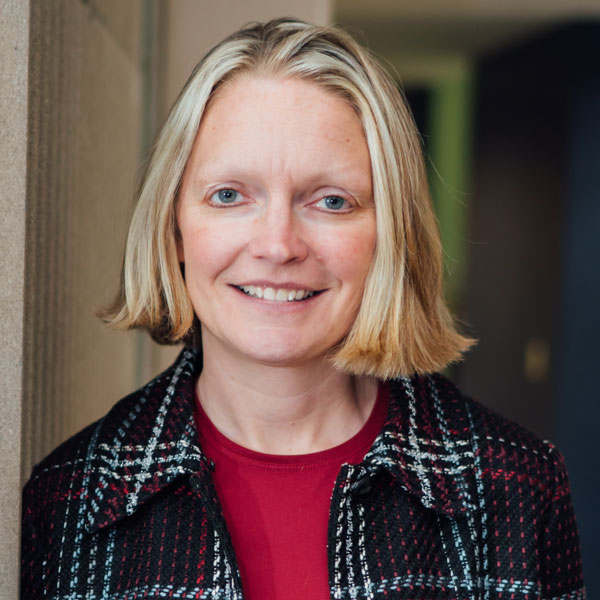
Michele Wildman
WHAT IS YOUR PRIMARY ROLE AS SVP OF COMMUNITY PLANNING AND DEVELOPMENT READINESS?
WILDMAN: As part of the MEDC’s comprehensive economic development strategy, we work to create attractive places where talent wants to live and work, businesses want to locate, and travelers want to visit and explore. The chief place officer is responsible for overall executive direction of this important community-building work in Michigan, including leading the teams responsible for helping Michigan communities and stakeholders foster catalytic community developments, create critical infrastructure for job growth, and create vibrant and sustainable places for Michiganders.
WHAT ARE THE PRINCIPAL GOALS THAT YOU HOPE TO ACHIEVE FOR MICHIGAN DURING YOUR TENURE IN THIS POSITION?
WILDMAN: The MEDC’s goals around job growth, talent attraction, and real median household income growth are dependent upon the success of the Make It in Michigan strategy. Our work is focused on helping our state become a place where everyone can thrive. Community development and our focus on creating attractive places will grow our population, increase private investment, result in new jobs, and allow our residents to have more opportunities and enjoy a higher quality of life across the state.
WHEN YOU TALK ABOUT PLACEMAKING, WHAT ARE SOME OF THE ASPECTS THAT YOU ATTRIBUTE TO THAT TASK?
WILDMAN: An effective placemaking strategy focuses on providing people-centered, amenity-rich neighborhoods that equitably serve the needs of those living there. Our work focuses on creating public spaces that are accessible to all, providing housing options that meet the needs of Michigan’s workforce, and creating vibrant and long-term resiliency in communities in every corner of the state.
HOW DOES MICHIGAN STACK UP OVERALL IN PLACEMAKING COMPARED TO THE STATES THAT IT COMPETES AGAINST ON A REGULAR BASIS?
WILDMAN: As a statewide economic development organization, we take a holistic approach. We have a diverse and customized approach to placemaking that sets us apart. It starts with realizing and celebrating the unique assets in communities around the state and working with local communities to prioritize the efforts that will address their challenges and make them most attractive to the investment they seek. We support Michigan communities with building a strong foundation for community-driven development through tailored technical assistance all the way through to cutting the red ribbon for new mixed-use development projects or place-based infrastructure.
WHAT IS ON YOUR DEPARTMENT’S AGENDA FOR THE COMING YEAR?
WILDMAN: The MEDC has over 200 projects in progress that were funded with its placemaking programs, representing over $1 billion in private investment, revitalization of 8.4 million square feet, and 2,400 housing units in various stages of the development process. In addition, the MEDC, together with the Department of Labor and Economic Opportunity, are working to launch a talent partnership program that aims to implement transformational public space development projects in central city neighborhoods and create local talent plans designed to increase the state’s population of talent by creating high-density, amenity-rich, walkable, and vibrant business districts in 410 communities across Michigan. The MEDC will also provide predevelopment assistance to 30 projects and offer site consultations in nearly 80 certified Redevelopment Ready Communities (RRCs). Predevelopment services help remove barriers to reinvestment, allowing communities to focus on a proactive approach to redevelopment.
CAN YOU SHARE EXAMPLES THAT SHOWCASE THE BEST THAT MICHIGAN HAS TO OFFER WHEN IT COMES TO PLACEMAKING?
WILDMAN: We have high-potential brownfield sites and outstanding tools to support their redevelopment. In Michigan, our definition of brownfield site is expanded to include historic buildings, functionally obsolete properties, and more. One project that used tax capture and tax exemptions associated with our Transformational Brownfield Program (TBP) renovated a vacant historic building in Detroit into a new mixed-use development called the Book Tower. The project’s $300 million investment created 229 new residential units, 117 hotel rooms with access to a lounge and fitness center, almost 40,000 square feet of office space, two restaurants, one pub, one cocktail lounge, and a rooftop bar. On the other side of the state, TBP is being used to bring a $146 million investment to a vacant and blighted former furniture warehouse in Grand Rapids. The mixed-use project, called Factory Yards, will revitalize over 611,000 square feet of space on 15.6 acres, creating 226 new jobs and 467 new mixed-income residential units.
WHAT RESOURCES DO MICHIGAN AND THE MEDC HAVE FOR ENHANCING PLACEMAKING THROUGHOUT THE STATE?
WILDMAN: There are several:
- Michigan Community Revitalization Program (MCRP): The MEDC helps to create catalytic, mixed-use real estate projects in Michigan by providing gap funding in the form of grants, loans, and other economic assistance to help develop vacant or underutilized sites.
- Brownfield Incentives and Programs: This suite of tools helps reactivate vacant, blighted, and historic properties by capturing a portion of specific incremental taxes generated from new place-based investments in Michigan downtowns and commercial corridors.
- Revitalization and Placemaking (RAP) program: RAP provides grant dollars to developers and communities to support place-based infrastructure development, real estate rehabilitation, public space improvements, and facades for small businesses.
- Redevelopment Ready Communities (RRC): To be competitive, Michigan communities must be ready for development. This involves planning for new investment, identifying assets and opportunities, and focusing resources. The MEDC’s team of RRC planners provides technical assistance to communities in developing a streamlined and transparent development process by looking at things like zoning, development review, economic development, marketing, and community engagement. RRCs also have access to tools such as predevelopment funding and strategic planning experts to help them achieve their economic development goals.
- Michigan Main Street (MMS): Since 2003, MMS has transformed commercial districts and communities across the state through dedicated economic development efforts, leading to economic growth and downtown revitalization. MMS empowers local priorities and supports local decision-making and input to guide on-the-ground economic development. MMS focuses on business attraction and retention, customer attraction, preservation, revitalization, and beautification — all critical components of placemaking.
OFFICE OF DEFENSE AND AEROSPACE INNOVATION EXECUTIVE DIRECTOR COL. JOHN GUTIERREZ, U.S. MARINE CORPS (RET.)
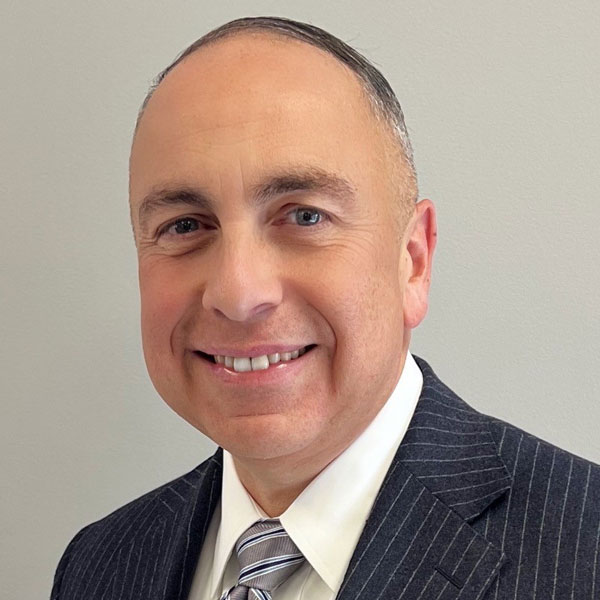
John Gutierrez
WHAT IS THE MISSION OF THE MICHIGAN OFFICE OF DEFENSE AND AEROSPACE INNOVATION (ODAI)?
GUTIERREZ: Our mission is to catalyze growth within the state’s aerospace and defense sectors while benefiting Michigan. The state has over 900 aerospace businesses. They contribute $30 billion to the state economy and create over 166,000 jobs. Our vision is to reimagine the arsenal for the 21st century. This entails three lines of effort: fostering business growth, amplifying Michigan’s advantages, and setting the conditions to advance innovation.
WHAT ATTRACTION ASSETS DOES MICHIGAN BRING TO THE TABLE THAT APPEAL TO EXPANDING COMPANIES IN THIS SECTOR OF THE ECONOMY?
GUTIERREZ: First is our ability to collaborate. For example, choosing the right location for a transformative project can be exciting and stressful. We collaborate closely with state agencies and local communities to align resources. We ensure it is the right location for the company and the community. That is critical for long-term success. Saab is a great example of this in Grayling, Michigan. We worked with the National Guard, the Michigan Department of Transportation (MDOT), and the DNR to help Saab set up shop. Other state agencies were involved, too, as were local and regional agencies.
WHAT ARE SOME PROJECT WINS FOR MICHIGAN IN THIS SECTOR OVER THE PAST YEAR?
GUTIERREZ: Saab is a Swedish aerospace and defense contractor spending $75 million to build a factory in Grayling. They will utilize Camp Grayling nearby for testing. They will be assembling precision fire systems and munitions by 2026. Many are being used in Ukraine in that conflict right now. We got engaged with Saab in 2023 as they began looking at sites in Michigan. We engaged with Team Michigan, the Michigan National Guard, and others. We had a Town Hall at a community college there. Our workforce was a big factor in why Saab chose that location — our preponderance of engineers, welders, machinists, skilled trades, etc. The state policy on installations for innovation helped too. That helps them in doing research and testing here. It is all part of the value proposition.
Another good example is the international trade team within the MEDC. We partnered with the trade and attraction teams on a successful visit to IDEX 2025, a large defense event, in Abu Dhabi, UAE. We had eight Michigan companies that we sponsored to come with us. They had $3.5 million in expected sales in the next three months. That is a significant ROI for a small company.
AS THE EXECUTIVE DIRECTOR OF THE ODAI, WHAT IS YOUR PRIMARY ROLE, AND WHAT DO YOU HOPE TO ACCOMPLISH DURING YOUR TENURE AT THE HELM?
GUTIERREZ: I lead the ODAI and drive the state’s initiative to reimagine the arsenal for the 21st century. I lead this as a growth hub for aerospace and defense. One of our goals is to strengthen Michigan’s unique advantages. We have some key efforts in collaboration with industry leaders, academia, and government. We are developing a strategic plan for defense and aerospace with a five-year outlook. To foster business growth, we are focused on a unified outreach campaign and travel to various places around the state. There are 11 APEX Accelerators in Michigan. We have a monthly aerospace and defense roundtable. We bring a lot of resource providers to that, and they are very happy to see us. It fosters organic collaboration and networking.
CHIEF MOBILITY OFFICER JUSTINE JOHNSON
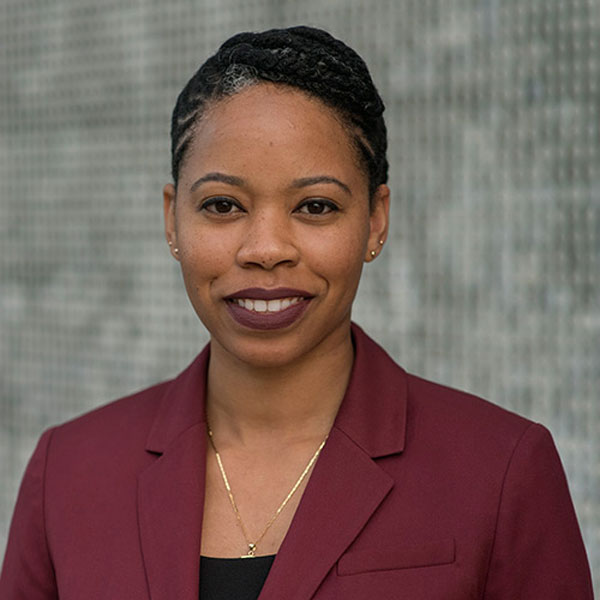
Justine Johnson
MICHIGAN IS THE NO. 1 STATE FOR THE AUTOMOTIVE INDUSTRY AND EV INVESTMENT, WITH 62% OF TOTAL U.S. SPENDING IN MOBILITY AND AUTO R&D HAPPENING HERE. WHAT KEY FACTORS HAVE DRIVEN MICHIGAN TO ESTABLISH AND MAINTAIN THIS LEADERSHIP POSITION?
JOHNSON: Within the OFME [Office of Future Mobility and Electrification], our goal is to make sure that Michigan is fully coordinated. We work within the MEDC on workforce development with our state partners. We collaborate on infrastructure work with MDOT. All those things help us maintain our leadership position. Our deep manufacturing expertise and our ability to attract companies from around the world are also driving factors. Mobility is anything that moves. We support the development of a variety of propulsion systems. We have an extremely talented workforce, and the Detroit River connects us to an international border.
MICHIGAN IS THE UNDISPUTED LEADER IN AUTOMOTIVE MANUFACTURING, HOME
TO 98 OF NORTH AMERICA’S TOP 100 AUTOMOTIVE SUPPLIERS, INCLUDING 60 HEADQUARTERED HERE. WHAT BUSINESS CONDITIONS AND ADVANTAGES MAKE MICHIGAN THE PREFERRED DESTINATION FOR THESE FIRMS?
JOHNSON: It is the abundance of resources that makes Michigan the top destination for these firms, including 26 OEMs. Over 17 universities, including four R1 universities, call Michigan home. From the undergrad to graduate level, we do things no one else can accomplish. For example, we created the world’s first wireless charging roadway. Through a unique partnership between the State of Michigan, Electreon, and Xos, we have created the infrastructure that allows EVs to charge while they remain in motion. Our infrastructure makes this an attractive hub. We offer dynamic partnerships that rely on different stakeholders. Hard tech companies and software companies here are looking to deploy new solutions, and there is ample funding available for real-world deployment.
WHAT DOES MICHIGAN DO TO TRAIN AND EQUIP THE NATION’S BEST WORKFORCE FOR MOBILITY TECH AND AUTO MANUFACTURING?
JOHNSON: We recognize various pathways to these jobs. From our youngest talent to any age of workers, we want to make sure people are ready for these careers. For businesses looking to support opportunities around electrification, we have a team focused on talent development, retention, and attraction. We have a new fellowship program that we stood up around mobility and EV. Another fellowship program is placed to work in Southeast Michigan with early-stage companies and innovators.
“We define mobility as something that extends beyond automotive technology. It includes air, water, and different types of vehicles like EVs, AVs, the next aircraft in the sky, etc.”
— Justine Johnson, chief mobility officer, MEDC
MICHIGAN HAS A HIGHER CONCENTRATION OF ENGINEERS THAN ANY OTHER PLACE IN AMERICA. HOW DOES MICHIGAN KEEP INVESTING IN ITSELF TO MAINTAIN THIS LEAD AND WIDEN IT?
JOHNSON: We define mobility as something that extends beyond automotive technology. It includes air, water, and different types of vehicles like EVs, AVs, the next aircraft in the sky, etc. We leverage our talent, and that includes our engineering capabilities in the state. We have four times the national average of industrial engineers. We are very competitive. Elite schools like the University of Michigan, Michigan State University, Kettering University, and others regularly train and graduate many of the most talented engineers and technical experts in the country.
WHAT PROJECT WINS HAS THE MEDC LANDED RECENTLY IN THE MOBILITY SECTOR?
JOHNSON: The marquee one is Electreon’s wireless charging roadway. The exciting part of this technology is that it appeals to fleet operators, as it allows vehicles to charge while they are on the road through electric coils in the road and electric receivers in the vehicle. Some routes may not have a place for charging. Dynamic charging happens while you are in motion.
That is just one example, and there are so many others in Michigan. We launched the Advanced Aerial Mobility Activation Fund in partnership with the MDOT Office of Aeronautics. This supports how drones might be utilized for rural health care services. It can be used for lab tech sample deliveries. We are doing work on the waterways, too. Companies are looking to decarbonize and electrify our watercraft and our marinas, and we are developing a charging network for that.
ARE THERE ANY PARTICULAR INCENTIVE PROGRAMS THAT MOBILITY TECH COMPANIES CAN USE TO FACILITATE INVESTMENT AND EXPANSION IN MICHIGAN?
JOHNSON: Through the OFME, we administer the Advanced Aerial Mobility Activation Fund. It supports zero-emission aircraft as well. The Centrepolis Accelerator partnership is an example. We had a one-time mobility fund. Companies could apply for funds from that. We recently closed on that. As part of a partnership with Gerald R. Ford Airport in Western Michigan, we provide funding for mobility solutions in an airport setting.

